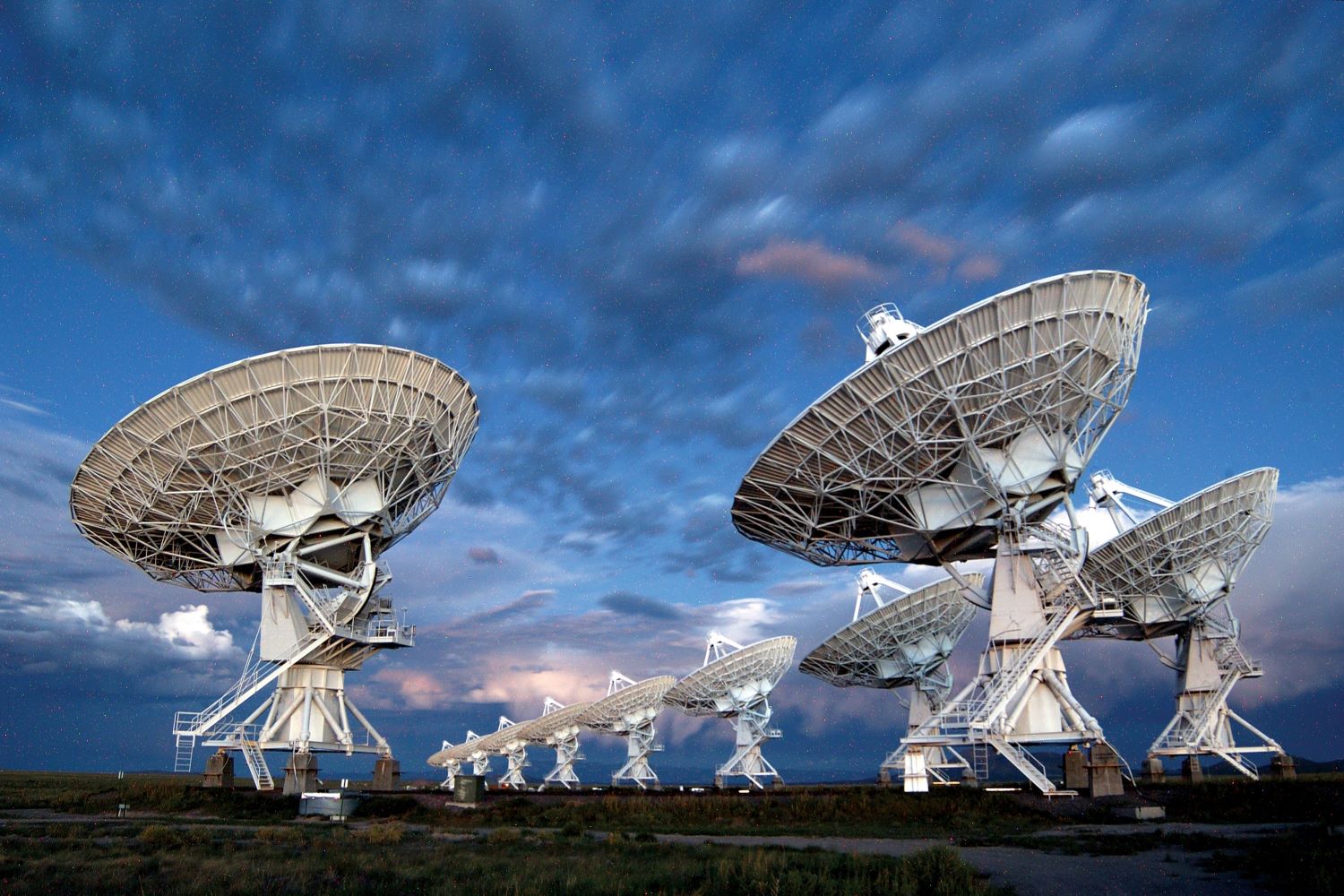Unveiling The Wonders Of The Very Large Array

Have you ever wondered what it would be like to stand among giant radio telescopes in the middle of the New Mexico desert? The Very Large Array (VLA) offers just that experience. Located about 50 miles west of Socorro, this astronomical observatory is one of the world's premier radio telescopes. Visitors can walk through the site, marvel at the massive dishes, and learn about the universe's mysteries. Whether you're a science enthusiast or just looking for a unique adventure, the VLA provides an unforgettable visit. Ready to explore the cosmos from Earth? The VLA awaits your curiosity!
What is the Very Large Array?
The Very Large Array (VLA) is one of the world's premier astronomical radio observatories. Located in the plains of San Agustin, New Mexico, the VLA consists of 27 radio antennas arranged in a Y-shaped configuration. Each antenna is 25 meters in diameter, and together they work as a single, massive telescope to observe celestial phenomena.
Why Visit the Very Large Array?
Visiting the VLA offers a unique opportunity to witness cutting-edge science in action. The site is not just for scientists; it's also a fascinating destination for tourists, students, and anyone curious about the universe. Here are some compelling reasons to visit:
Educational Experience: The VLA offers guided tours and educational programs that explain the science behind radio astronomy. Learn how astronomers use radio waves to study everything from black holes to distant galaxies.
Stunning Scenery: The VLA is set against the backdrop of New Mexico's vast, open plains. The landscape alone is worth the trip, offering breathtaking views and photo opportunities.
Interactive Exhibits: The visitor center features interactive exhibits that make complex scientific concepts accessible to all ages. Touch screens, models, and videos help explain how the VLA works and what it has discovered.
Special Events: Throughout the year, the VLA hosts special events like star parties and open houses. These events provide a deeper dive into the world of astronomy and often include guest speakers and additional activities.
How to Get to the Very Large Array
Reaching the VLA involves a bit of travel, but the journey is part of the adventure. Here’s how to get there:
By Car: The most straightforward way to reach the VLA is by car. From Albuquerque, it's about a two-hour drive southwest. The route takes you through scenic landscapes, making the drive enjoyable.
Public Transport: While public transport options are limited, you can take a bus to Socorro, New Mexico, and then rent a car for the remaining 50-mile drive to the VLA.
Guided Tours: Some tour companies offer guided trips to the VLA from major cities like Albuquerque and Santa Fe. These tours often include additional stops at nearby attractions.
Best Time to Visit the Very Large Array
Timing your visit can enhance your experience. Here are some tips on when to go:
Spring and Fall: These seasons offer mild weather, making it comfortable to explore the outdoor exhibits and take guided tours.
Special Events: Plan your visit around one of the VLA's special events for a more immersive experience. Check their website for upcoming events and dates.
Weekdays: Visiting on a weekday can help you avoid the crowds, giving you more time to explore and ask questions.
What to Expect During Your Visit
Knowing what to expect can help you make the most of your trip. Here’s a rundown of what you’ll experience:
Visitor Center: Start at the visitor center, where you’ll find exhibits, a gift shop, and a short film about the VLA. This is a great place to get an overview before heading out to the antennas.
Self-Guided Tour: Pick up a map and take a self-guided tour of the facility. Information plaques along the way explain the different components and their functions.
Guided Tours: If you prefer a more structured experience, join a guided tour. Knowledgeable guides provide in-depth information and answer questions.
Observation Deck: Don’t miss the observation deck, which offers a panoramic view of the entire array. It’s the perfect spot for photos and to appreciate the scale of the VLA.
Nearby Attractions
While the VLA is the main attraction, there are other interesting places to visit nearby:
Bosque del Apache National Wildlife Refuge: Located about an hour away, this refuge is a haven for birdwatchers. It’s especially popular during the winter migration season.
Socorro: This small town offers dining, shopping, and additional historical sites. It’s a convenient stop on your way to or from the VLA.
El Camino Real Historic Trail Site: Learn about the historic trade route that connected Mexico City with San Juan Pueblo. The site features exhibits and walking trails.
Magdalena: This nearby village offers art galleries, shops, and the historic Magdalena Ridge Observatory. It’s a charming place to explore after your VLA visit.
Final Thoughts on the Very Large Array
The Very Large Array in New Mexico offers a unique blend of science and natural beauty. This spot isn't just for science buffs; it's a place where anyone can appreciate the vastness of the universe. The radio telescopes stand tall against the backdrop of the New Mexico desert, creating a sight that's both humbling and awe-inspiring. Visitors can take guided tours to learn about the array's role in astronomical discoveries or simply enjoy the serene landscape. Whether you're a space enthusiast or just looking for a unique destination, the Very Large Array won't disappoint. It's a reminder of how small we are in the grand scheme of things and how much there is still to learn about our universe. So, next time you're in New Mexico, make sure to add this incredible site to your itinerary.

